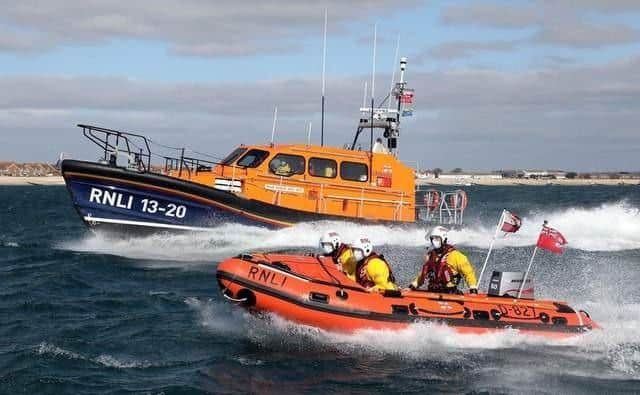Sea safety tips: RNLI’s top tips for staying safe in the sea and beaches with lifeguards around Newcastle
This article contains affiliate links. We may earn a small commission on items purchased through this article, but that does not affect our editorial judgement.
and live on Freeview channel 276
With the beautiful weather expected to continue for Newcastle this weekend, many people will be flocking to the beaches.
The Times’ just released their list of the best beaches in the UK and our very own South Shields Sandhaven beach won beach of the year, so there is no better place to go enjoy the nice weather.
Advertisement
Hide AdAdvertisement
Hide AdWhile our northern beaches are some of the most beautiful in the country, the ocean can be a dangerous place.


It’s important to remember how to keep yourself safe and prevent putting yourself in dangerous situations, the RNLI website has a range of tips to help you this summer.
So, what are the best tips for staying safe at the beach? Here’s what the RNLI has to say about beach safety.
Sea Safety tips from the RNLI
Here are the top tips for staying safe at the beach from the RNLI website:
Advertisement
Hide AdAdvertisement
Hide Ad- Choose a lifeguarded beach. This is really important for safety as you wil have highly trained professionals who will be there to help if you get into danger. RNLI lifeguards patrol 245 lifeguarded beaches across the UK and Channel Islands. Find a lifeguarded beach near you or your holiday destination.
- Know the risks. If you are planning to head to the beach this summer it’s important that you can identify risks such as rip currents to cold water shock. Being aware will help you stay safe.
- Call 999. When you go to the beach you should always have a way to call for help. You can carry your phone in a waterproof pouch and if you find yourself in an emergency you can call for help. Call 999 if you’re in the UK and stuck.
- Know your flags. This is important if you are at a beach as the flags mark where it’s safe to swim. Swimmers and bodyboarders should stay between yellow and red flags, those on surfboards or paddle boards should go between the black and white chequered flags. If a red flag is flying the water is dangerous and you should not enter the water under any circumstances.
- Float to Live. If you are struggling in the water, lean back and use your arms and legs to help you float. Wait until you can control your breathing and call for help or swim to safety.
Five lifeguarded beaches in the North East
Longsands, Tynemouth
Longsands is one of the most popular beaches in the North East with long stretches of golden sand and surf lessons happening everyday throughout the summer.
Cullercoats
Cullercoats is a small sandy bay enclosed by cliffs and two piers. A working Victorian RNLI lifeboat sits within the harbour too.
Sandhaven Beach, South Shields
This recently won The Times’ beach of the year, and is lined with dunes and cliffs. Not to mention it’s a great place for bird watching.
Seaburn Beach
This wide sandy beach is popular with water sport enthusiasts and offers great conditions for windsurfing. They also have facilities close to the beach.
Advertisement
Hide AdAdvertisement
Hide AdWhitley Bay
This beach is huge and the big expanse of sand stretched from Whitley Bay towards St Mary’s Lighthouse. The beach is famous for its rock pools. The southern end of the beach holds a Blue Flag and Quality Coast Award.
You can find a lifeguarded beach near you on the RNLI website.
Comment Guidelines
National World encourages reader discussion on our stories. User feedback, insights and back-and-forth exchanges add a rich layer of context to reporting. Please review our Community Guidelines before commenting.
